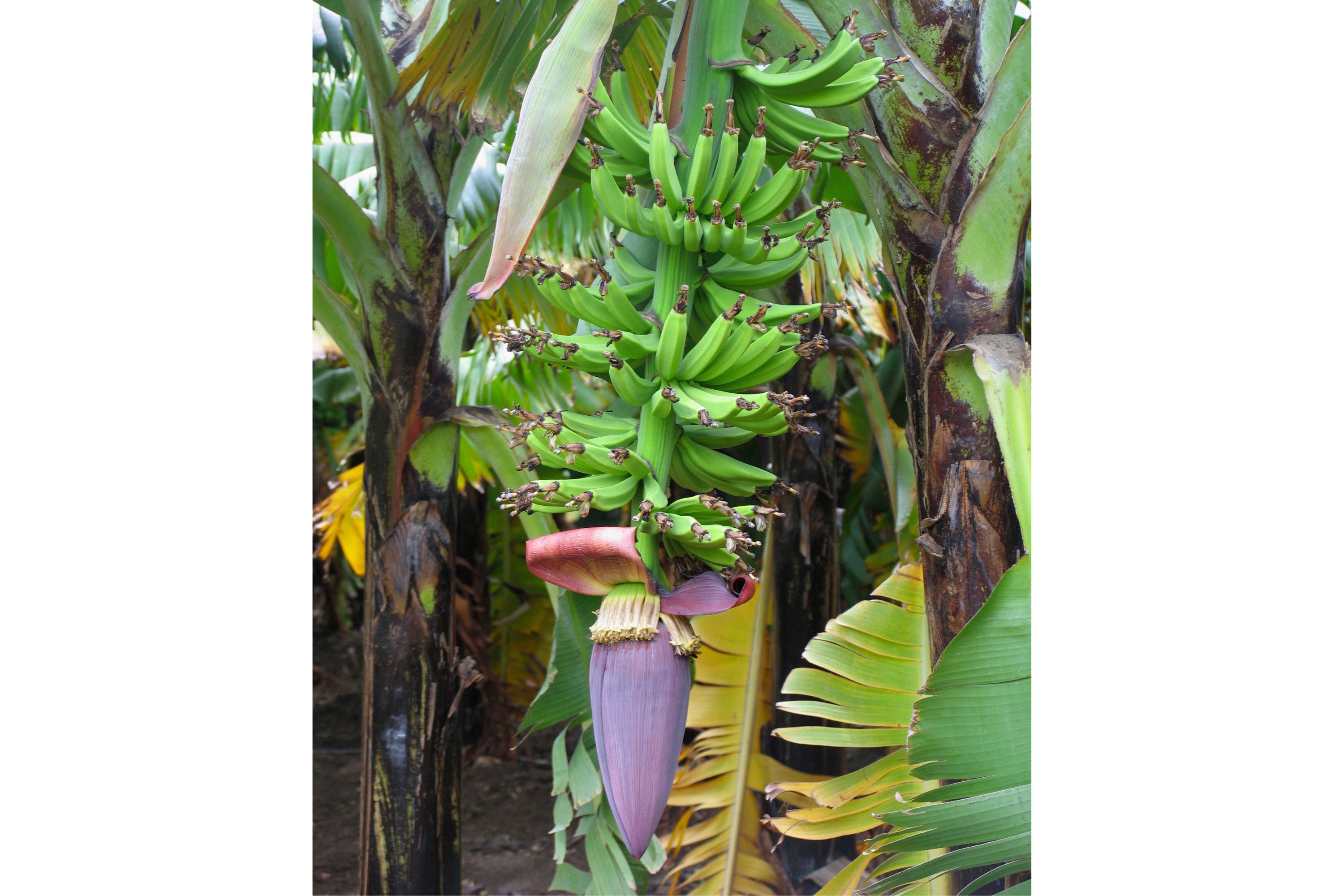Common banana
(Musa paradisiaca)

Description
Musa × paradisiaca is the accepted name for the hybrid between Musa acuminata and Musa balbisiana. Most cultivated bananas and plantains are triploid cultivars either of this hybrid or of M. acuminata alone. Linnaeus originally used the name M. paradisiaca only for plantains or cooking bananas, but the modern usage includes hybrid cultivars used both for cooking and as dessert bananas. Linnaeus's name for dessert bananas, Musa sapientum, is thus a synonym of Musa × paradisiaca. Almost all cultivated plantains and many cultivated bananas are triploid cultivars of M. × paradisiaca. It is believed that Southeast Asian farmers first domesticated M. acuminata. When the cultivated plants spread north-west into areas where M. balbisiana was native (see map), hybrids between the two species occurred and were then developed further into a wide range of cultivars. The above-ground part of the plant is a "false stem" or pseudostem, consisting of leaves and their fused bases. Each pseudostem can produce a single flowering stem. After fruiting, the pseudostem dies, but offshoots may develop from the base of the plant. Cultivars of M. × paradisiaca are usually sterile, without seeds or viable pollen. Musa is one of two or three genera in the family Musaceae. The genus includes flowering plants producing edible bananas and plantains. Around 70 species of Musa are known, with a broad variety of uses. Musa species are used as food plants by the larvae of some Lepidoptera species, including the giant leopard moth and other Hypercompe species, including H. albescens (only recorded on Musa), H. eridanus, and H. icasia. Banana plants represent some of the largest herbaceous plants existing in the present, with some reaching up to 9 metres (30 ft) in height. The large herb is composed of a modified underground stem (rhizome), a false trunk, a network of roots, and a large flower spike. The false trunk is an aggregation of the basal portion of leaf sheathes; it is not until the plant is ready to flower that a true stem grows up through the sheath and droops back down towards the ground. At the end of this stem grows a peduncle with many female flowers protected by large purple-red bracts. The extension of the stem (this part called the rachis) continues growth downward where a terminal male flower grows.
Taxonomic tree:







